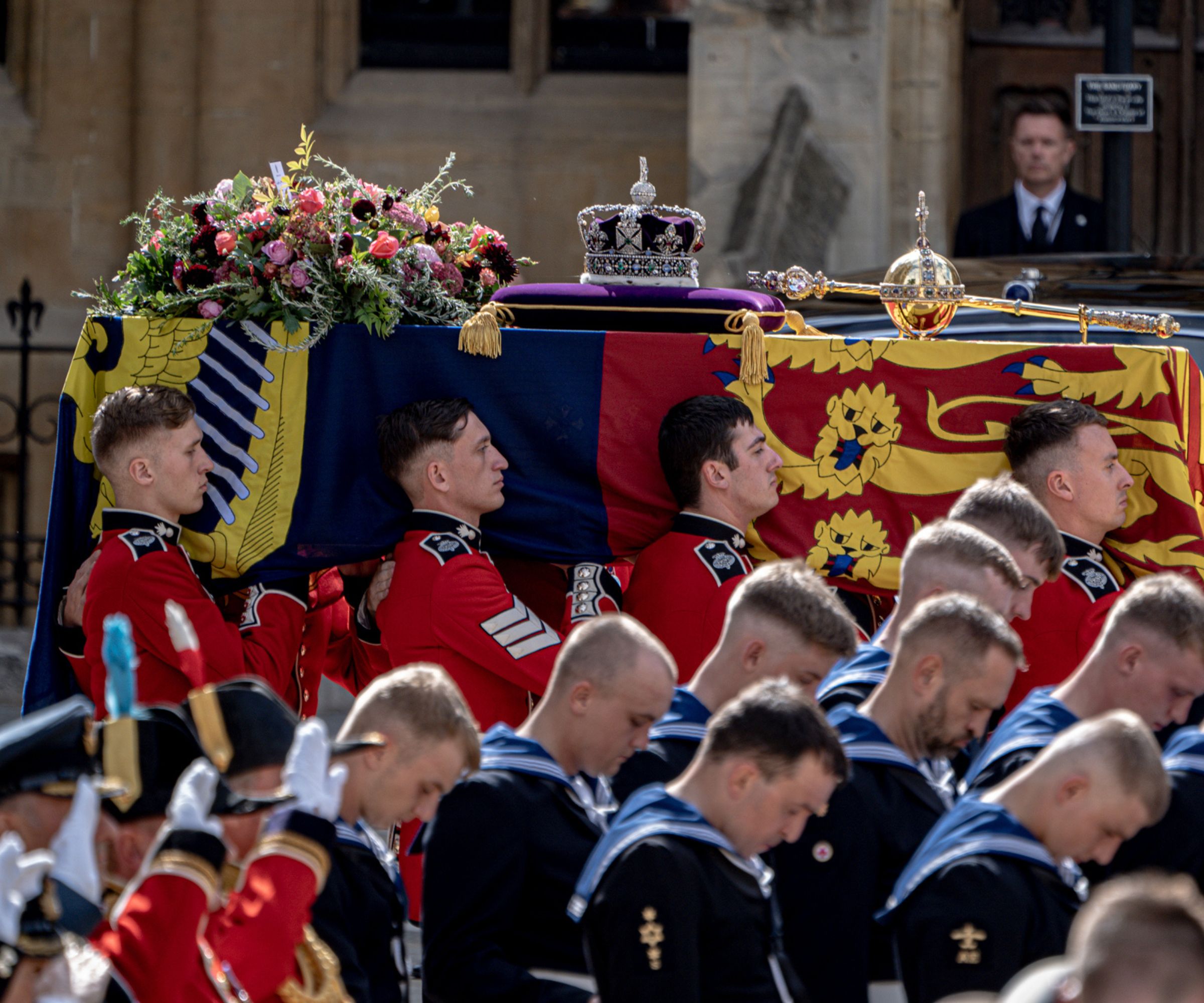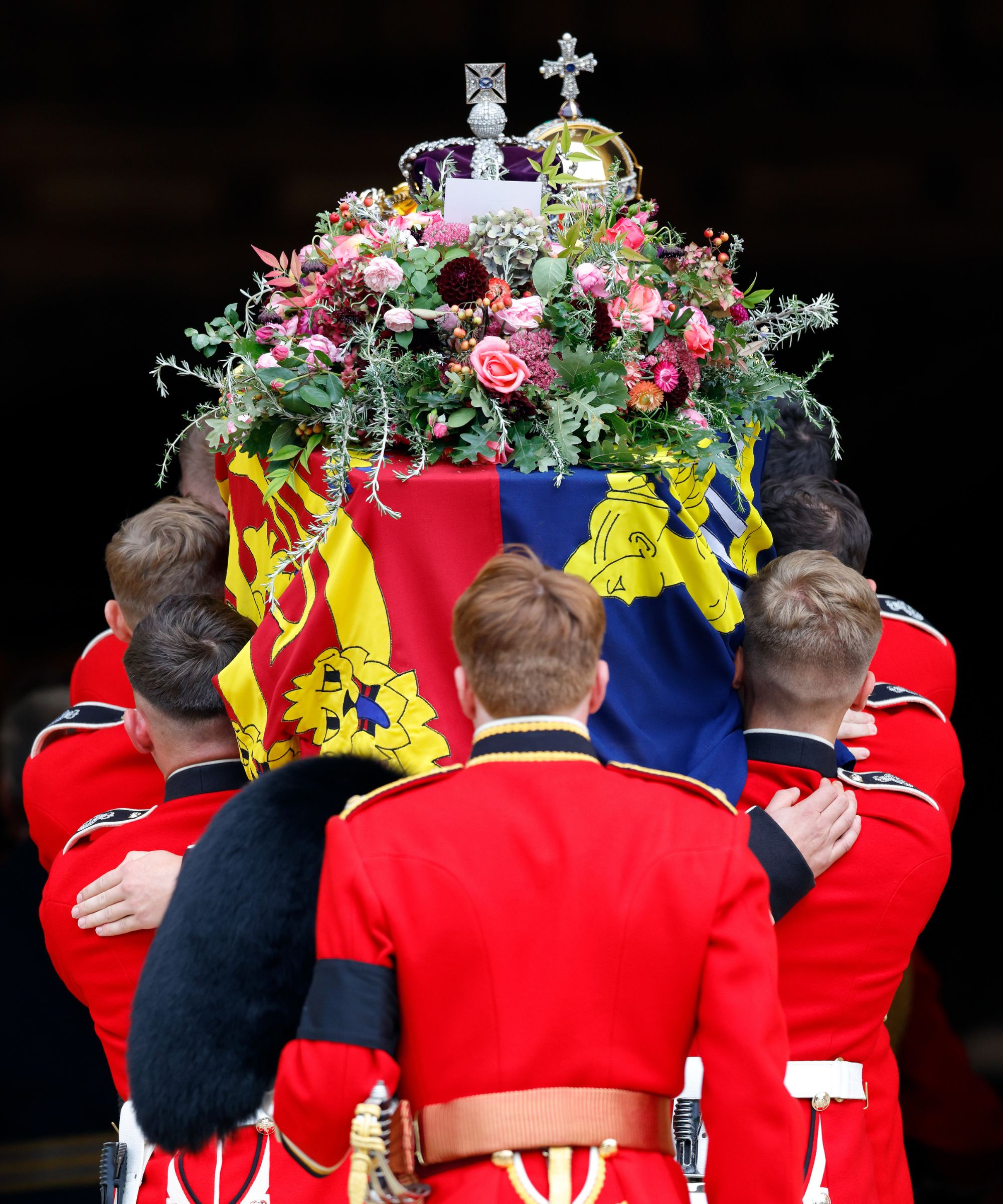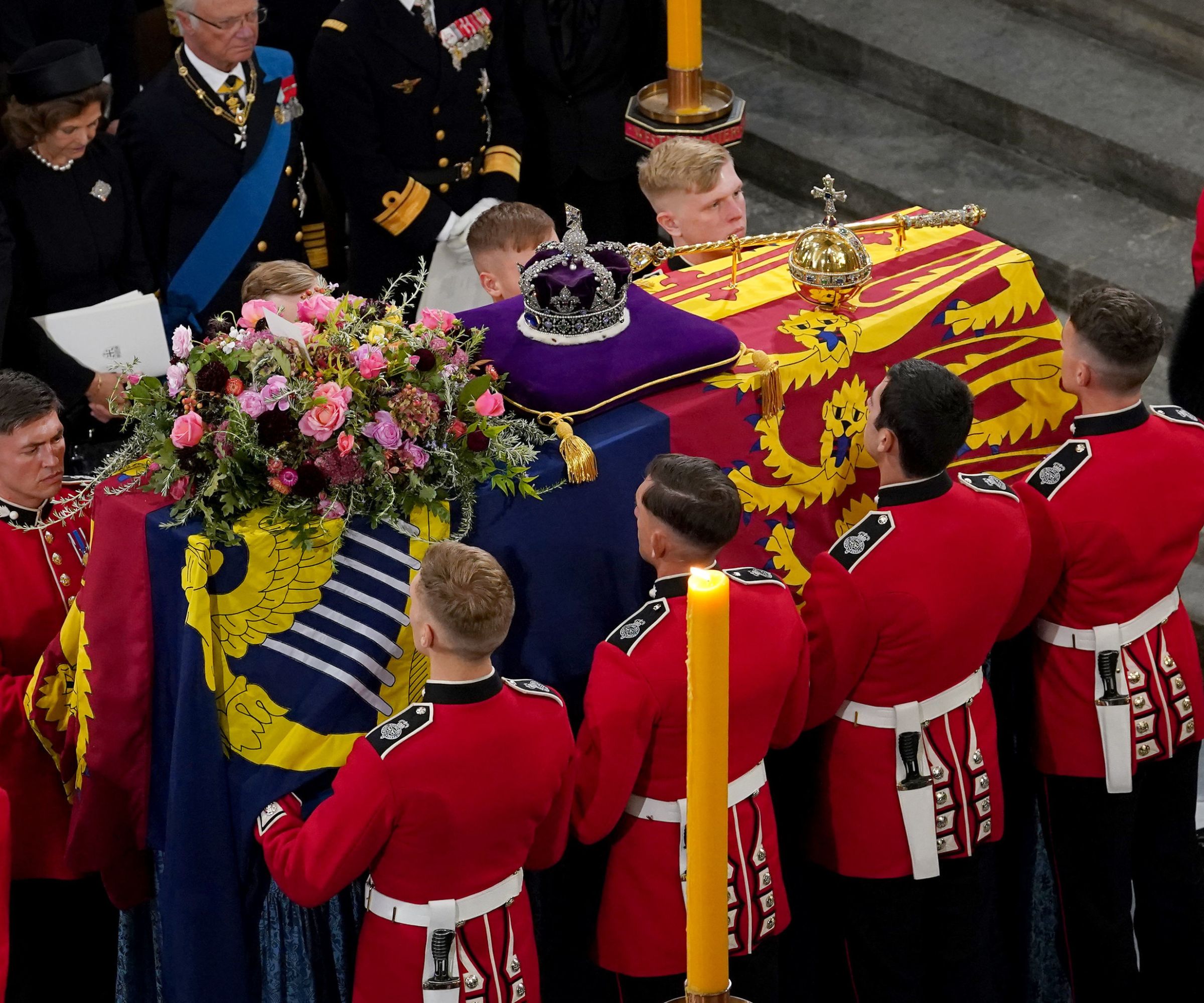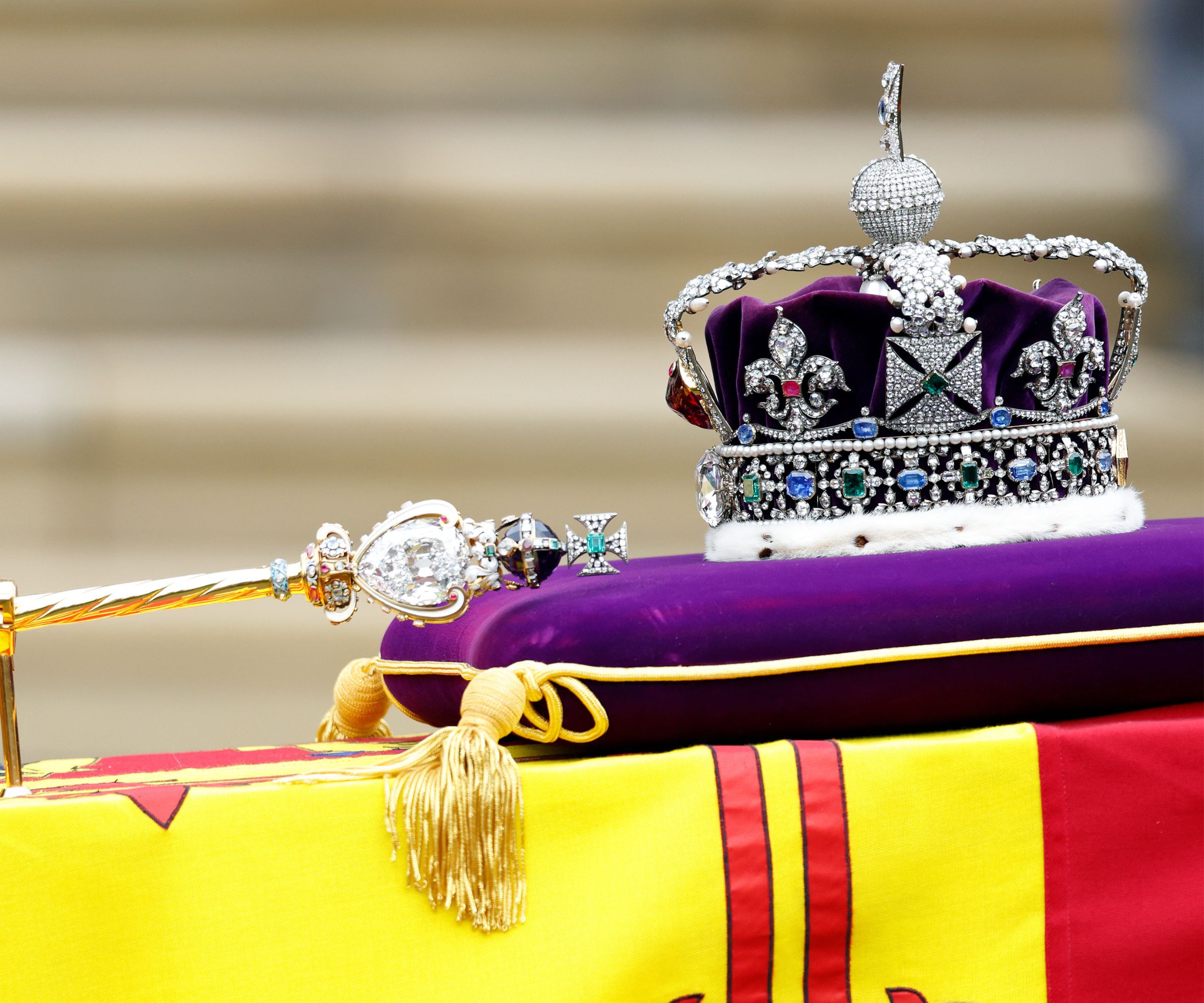The Queen’s funeral flowers – and the special meanings the wreath conveyed
The late Queen’s flowers were chosen especially according to their individual meaning


As with all other aspects of the late monarch's funeral, the flowers on Queen Elizabeth II’s coffin were chosen with precision and poignancy to convey special and touching messages about the Queen herself.
Atop the oak wood coffin laid not only the Crown Jewels but a floral arrangement that had been specially selected by King Charles III, the Queen's eldest son, and blooms picked from the gardens of some of the Queen and her family’s most beloved royal residences; Buckingham Palace, Clarence House, and Highgrove House.
Here, we look at each of the fall wreath flowers and their meanings to learn why this bouquet was perhaps one of the most meaningful touches at the state funeral.
The Queen's funeral flowers
The flowers were carefully selected to convey meaning through both their variety and their color, with shades of pink, burgundy, white, and gold chosen to reflect the Royal Standard. Garden roses, pelargoniums, hydrangeas, sedums, dahlias, and scabious were chosen to reflect the Royal Standard, the flag draped over the coffin, which represents the Sovereign and the United Kingdom

Roses in pink and red adorned the wreath, with the colors carrying their own special meaning and message to the monarch.
‘Pink roses at funerals relays gratefulness, while red roses convey deep respect and love,’ explains Rachel Crow, gardens editor for Homes & Gardens. ‘They seem particularly fitting for a ceremony celebrating the life of the beloved monarch.
'Sedums represent peace and tranquillity too,’ Rachel continues, ‘a lovely choice for a Queen who has reigned for so long.’
Design expertise in your inbox – from inspiring decorating ideas and beautiful celebrity homes to practical gardening advice and shopping round-ups.

Dahlias symbolize beauty, kindness, and lasting commitment, Rachel says. ‘This addition was not only due to their beauteous appeal. Queen Elizabeth II served her country for 70 years, the second longest reign of any monarch in history, so these flowers will have been carefully chosen to reflect upon her dutiful service to her country.’
‘Scabious, although a popular wedding flower, also found its place in the Queen's funeral wreath,’ Rachel adds. ‘Although it may seem out of place at first, these flowers represent love and peace.’

Myrtle was another traditional wedding flower to be included in the wreath, with the sprigs in the arrangement cut from a plant grown from a sprig of myrtle used in the Queen’s 1947 wedding bouquet, revealed the official Royal Family Twitter account.
UK gardening expert Alan Titchmarsh spoke to the BBC at the funeral explaining that, ‘[The Queen] was a keener gardener more than most people would realize.’ With the Queen having looked after her own private garden at the Sandringham estate, this special cutting, therefore, carries significant personal meaning to the late monarch.

English Oak cuttings were also featured alongside the flowers, representing the strength of love and speaking to the long royal history of England. ‘Our history was in that wreath,’ Alan continued. ‘There were oak leaves in there. There are oak trees in Great Windsor Park that were growing when William the Conqueror invaded in 1066. Some of them are still there.’
Perhaps the most touching tribute, however, was the addition of a small handwritten card from her son, King Charles III. The note, written on his personal stationery simply read: “In loving and devoted memory, Charles R.”

One interesting flower that appears to be missing from the arrangement is the Lily of the Valley.
‘Lily of the Valley was the Queen's favorite flower,’ Alan Titchmarch added. The smaller, humble flower symbolizes motherhood and humility. The blooms grow in abundance in the gardens of Buckingham Palace and were featured in the Queen's wedding bouquet in 1947 and her Coronation bouquet in 1953. These special flowers held other special associations for the Monarch for many years too, so it is expected that these flowers may have featured heavily in the family's private ceremony.
The Queen has been laid to rest at Windsor Castle, her most beloved home, in St. Georges Chapel beside her late husband Prince Phillip, and her parents.

Chiana has been at Homes & Gardens for two years and is our resident 'queen' of non-toxic living. She spends most of her time producing content for the Solved section of the website, helping readers get the most out of their homes through clever decluttering, cleaning, and tidying tips. She was named one of Fixr's top home improvement journalists in 2024.